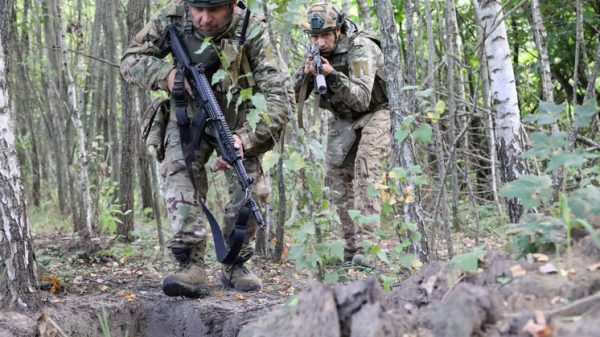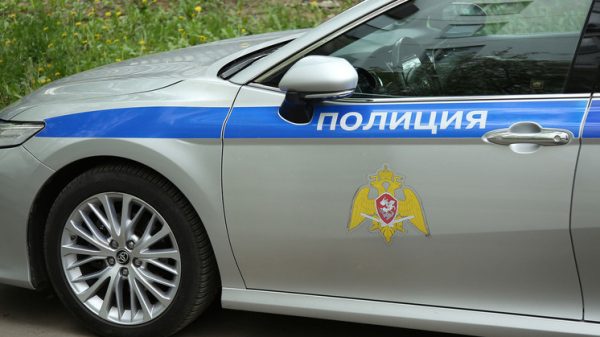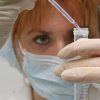Face masks have become a standard feature of everyday life, mandatory in most indoor settings. But despite being designed to completely cover the nose and mouth , it’s not uncommon to see them pulled to one side or resting on the chin – much to the annoyance of the general public. Here are some of the most popular versions – and expert opinion on why they don’t work.
The trapdoor
Cutting a hole in your mask to allow you to eat or drink may seem like a sensible solution if you’ve booked a table in a crowded pub or restaurant and want to keep yourself protected. But it will also reduce the efficacy of the mask. “If you’ve cut a big hole in it, it’s not doing any good, because you’re just breathing the droplets out,” says Prof Cathy Noakes, an expert in airborne disease transmission at the University of Leeds. However, cutting small slit may not be as mad as it may sound: “If you had a tiny slit, just enough to pass a straw through, that is likely to be quite a lot better than not having a mask on at all,” says Noakes. But the Trapdoor should be reserved for this purpose only, and not worn more widely.
The tickler
Pulling the mask down beneath the nose is a common technique for those who wish to avoid the hot and sweaty feeling of a mask – as well as those whose glasses get steamed up. The main purpose of wearing a face mask is to protect other people from your respiratory droplets, and by covering your mouth, you will be catching those produced by talking or coughing – although you will still be exhaling smaller droplets through your nose. However, masks also shield the wearer to some extent, and if you’re breathing unfiltered air through your nose, you will be afforded zero protection from airborne viruses.
The nose patch
A strategy sometimes adopted in noisy situations, where the ability to lip-read would be really helpful. In terms of protecting other people, the nose patch is probably worse than the tickler, because it doesn’t trap the droplets produced through speech or coughing. It also fails to protect the wearer if they breathe through their mouth.
The earring
We get it – it’s nice to take a gulp or two of fresh air before masking up again to enter a different shop, and the ear is perfectly shaped for mask-dangling. However, in terms of reducing viral transmission, it is entirely pointless. If your mask falls to the floor, it will pick up additional dirt and germs, which you may then transfer to your face. And if your mask blows away, it will add to the growing environmental cost of Covid-19.
The Michael Eavis
Like the “earring” (above), this neckbeard configuration affords no protection for the wearer or their neighbours. Worse, it risks spreading any germs on the outside of the mask around the face. “Imagine your friend has coronavirus, and you’re sat opposite them in a pub,” says Noakes. “Your mask will have their virus on it. Every time you pull it up and down, you could potentially be transferring that virus from your fingers to your nose.”
Holey-moley
Masks work by catching small respiratory droplets that you exhale, and so the more of these your mask can catch, the more effective it will be. Items like scarfs and snoods can be acceptable alternatives, but the material they’re made from matters. “The droplets we care about are 100 microns or less, and the thickness of a human hair is about 60 microns,” says Noakes. “So if you compare that to the size of the holes in your average scarf, you can quickly see that that’s not really going to work.” The ideal face covering should be made of a material that you find to be comfortable and breathable (such as cotton) and ideally include at least two layers of fabric. You should also look for a tight-weave fabric, and possibly a combination of different fabrics, because the materials can interact with each other to trap particles, Noakes says.
The visor
Plastic visors are designed as spray protectors, so that if someone coughs in your face, it will protect you against the really big droplets – but smaller droplets can still be carried in the air, and under the visor.
This also applies to the droplets you breathe out: A recent Japanese study found that almost 100% of airborne droplets of less than 5 micrometres in size escaped through the kind of plastic visors often worn by people working in service industries. “The one thing they do provide, which a face mask doesn’t, is protection for your eyes,” says Noakes. Since some respiratory viruses, including coronavirus, can enter the body through this route, combining a face mask with a visor may provide an extra layer of protection.

























































Свежие комментарии